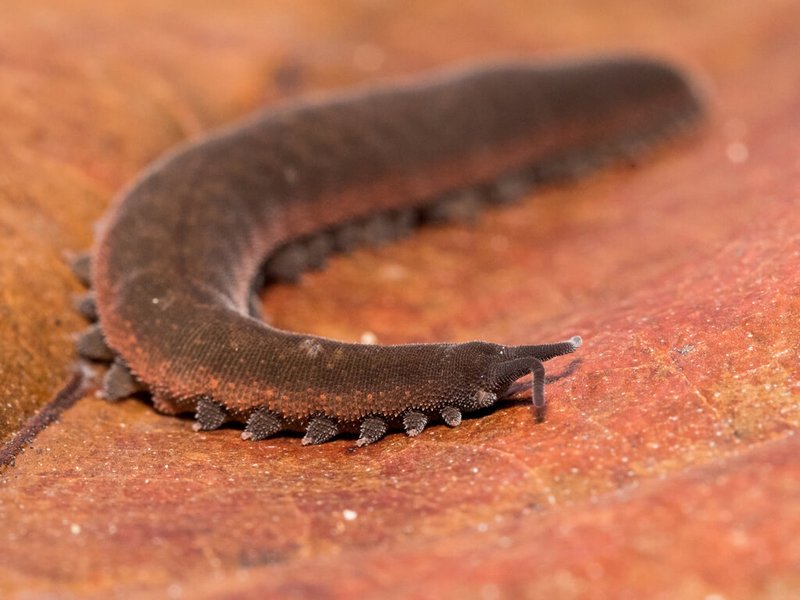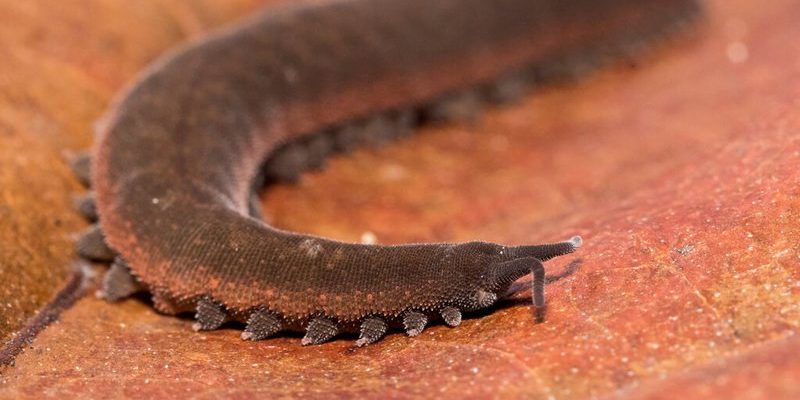
Velvet worms have some interesting seasonal habits that help them survive in the wild. They rely heavily on their environment, adapting to changes in temperature, humidity, and food availability. Picture a cozy coffee shop on a rainy day, where the atmosphere is warm and inviting. That’s how velvet worms feel during certain seasons. When conditions are just right, they come out to play. As we dive deeper into their seasonal behavior, you’ll see just how these creatures thrive in their unique habitats.
Understanding Velvet Worm Habitats
Velvet worms are often found in damp, dark environments like rainforest floors or leaf litter. This preference for humidity is no coincidence. Their bodies are soft and lack a hard outer shell, making them vulnerable to drying out. Think of them as little sponges that need to stay moist to survive. You might find them hiding under rocks or decaying logs, camouflaged perfectly against their surroundings.
During the warmer months, especially after rainfall, the humidity levels rise, creating perfect conditions for these creatures. They thrive in temperatures between 20°C to 25°C (68°F to 77°F); anything outside of this range, they may find challenging. In contrast, during cold or dry seasons, they tend to burrow deeper into the ground or stay inactive, much like how you might hunker down under a blanket on a chilly day.
Seasonal Changes and Activity Levels
As the seasons shift from warm to cold and vice versa, velvet worms change their activity levels. In spring and summer, they become increasingly active, taking advantage of the warm temps. This is when you might spot them moving around to hunt for prey. They are primarily nocturnal, which means most of their action happens at night. Much like how you might enjoy a midnight snack, these creatures venture out when it’s cooler and more humid.
When autumn rolls around, things start to change. The decreasing temperatures signal velvet worms that it’s time to slow down. They begin to reduce their activity. During winter, they often go into a dormant state. Imagine you’re preparing for a long road trip; you’d check your supplies and ensure everything is set. Velvet worms do something similar—they curl into an inactive state, conserving energy until conditions improve.
Feeding Habits and Their Seasonal Impact
Velvet worms are carnivorous, primarily feeding on insects like ants and termites. Their hunting techniques are a bit unique. They utilize a fascinating method of slime production, shooting out a sticky substance to trap their prey. Picture a spider using silk—only these guys have their own version!
In spring and summer, the abundance of insects means velvet worms can feast comfortably. However, as the colder months approach and insect populations dwindle, their feeding opportunities decrease. This is why velvet worms are so in tune with their environment. They adjust their hunting strategies and locations based on what’s available. In the wild, it’s a bit of a survival game, and they’re pretty skilled at playing it.
Adapting to Weather Changes
Weather changes significantly impact velvet worms. During the rainy season, they take advantage of the increased humidity and temperatures. This is when their hunting and mating activities surge. You can think of it as a summer party where everyone is out celebrating. They grow, mate, and generally seem to thrive.
As the rain stops and dry weather takes hold, they may retreat into their burrows or damp crevices to avoid desiccation. Here’s the interesting part: some species can even endure short periods of extreme dryness by slowing down their metabolism. It’s kind of like hitting the pause button until the weather gets better!
Reproduction and Seasonal Cycles
When it comes to reproduction, velvet worms have a unique seasonal rhythm. During optimal conditions—typically in the warmer months—they become more active in searching for mates. Velvet worm courtship is quite the spectacle. They perform a dance-like ritual, showcasing their colorful bodies to attract partners.
After mating, the female produces a small number of eggs (usually around 20), which they keep inside their bodies until they’re ready to hatch. As the warmer months fade into fall and winter, those eggs are more likely to hatch when conditions improve. Timing is everything, and velvet worms seem to know that. They aim to release their young when it’s warm and food is plentiful, just as leaves are budding in spring.
Impact of Climate Change
With climate change affecting weather patterns worldwide, velvet worms may face new challenges in adapting to their seasonal behaviors. Shifts in temperature and rainfall can disrupt their breeding cycles and food sources. You might wonder, what does this mean for these quirky creatures? If conditions become too extreme, they might have to change their habitats or risk declining populations.
For example, if droughts become more common, velvet worms will have fewer moist areas to thrive. This could lead to decreased feeding opportunities and impact reproduction. It’s a cascading effect that highlights how interconnected our ecosystems are.
Conservation and the Future of Velvet Worms
Given their specialized habitats and sensitivity to environmental changes, conservation efforts are essential for the future of velvet worms. Protecting their natural habitats means preserving the delicate balance of moisture and temperature they rely on.
You might be thinking, “What can I do to help?” Every little bit counts! Supporting local conservation initiatives, educating others about these intriguing creatures, and promoting habitat preservation are all ways to contribute. The more we understand velvet worms and their seasonal behavior, the better we can protect them.
The Role of Research
Ongoing research is critical for understanding how velvet worms adapt to seasonal changes and other environmental threats. Scientists are studying their behaviors, habitats, and breeding patterns to gather more data. This not only helps in the conservation of velvet worms but also sheds light on broader ecological issues.
Collecting data on these unique creatures can lead to a better understanding of ecosystem health and resilience. As researchers discover more about their fascinating lives, we can work together to find solutions to threats they face.
The seasonal behavior of velvet worms is a captivating example of how delicate life can be in the wild. From their unique feeding habits to their reproductive cycles, every aspect is finely tuned to their environment. Understanding these fascinating creatures gives us insight into the health of our ecosystems.
As we face global challenges like climate change, the story of velvet worms reminds us of the importance of conservation. So, next time someone brings up wildlife, consider sharing a little about these squishy wonders. After all, they may not be flashy, but they play a critical role in maintaining the balance of our planet’s ecosystems.

